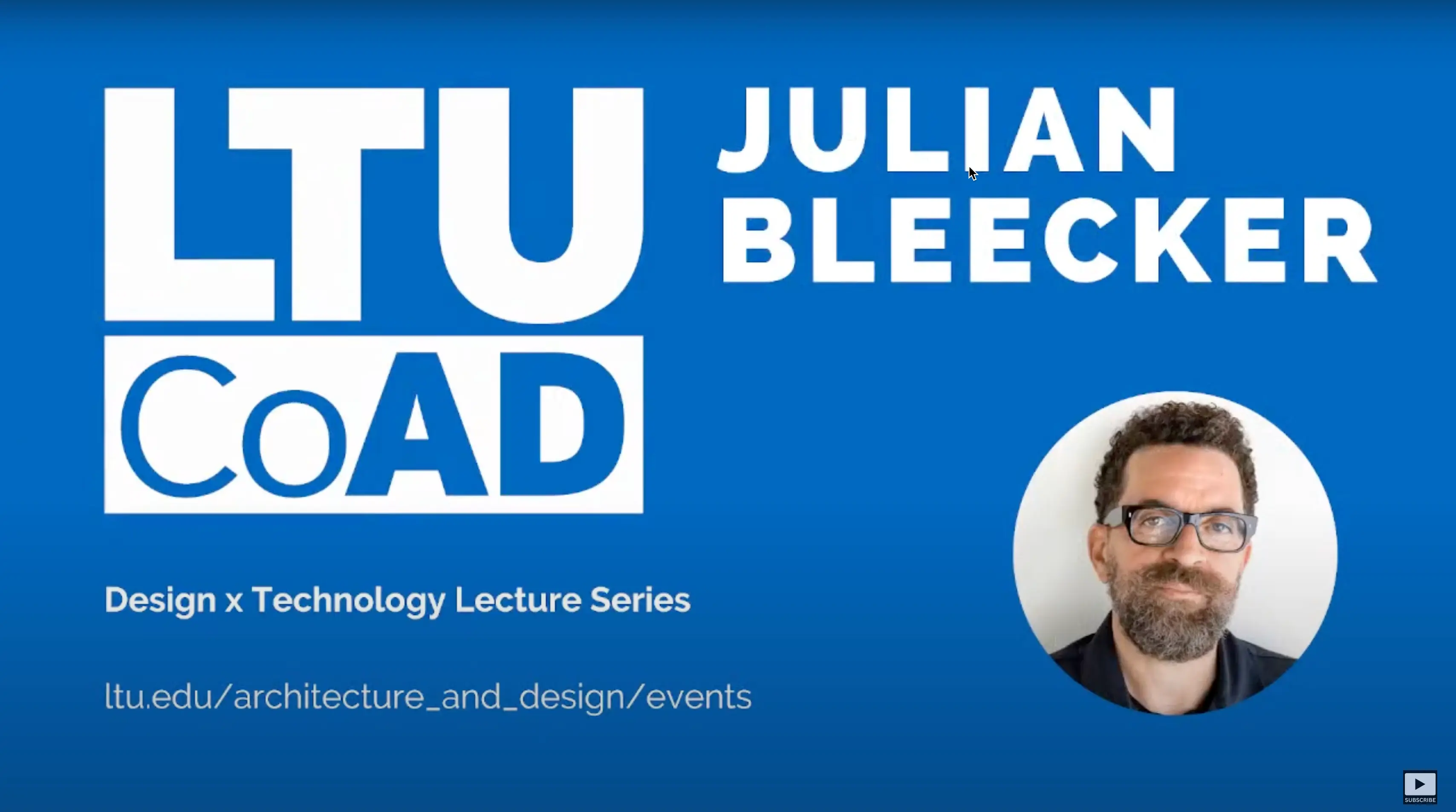
Talk Date: 3/30/23, 9:30 AM
Published On: Oct 6, 2024, 22:44
Updated On: Oct 6, 2024, 22:44
I had the privilege of presenting at the College of Architecture and Design at Lawrence Technological University, where we explored the fascinating intersection of design, technology, and practice. This conversation was a deep dive into the role of imagination and structure in shaping the future, utilizing a concept close to my heart: Design Fiction.
The Predicament of Structure and Imagination
In our creative endeavors, we often bump up against the confines of structure—a bureaucracy, systems, and rules designed to make our world comprehensible but which sometimes stifle our creativity. My dialogue with the students began with this idea, sparking a discussion on how to not just fight structure but to collaborate with it, nurturing creativity. The trick is to realize that when imagination and structure coexist harmoniously, the extraordinary can happen.
The Star Trek Catalyst
I reminisced about a particular epiphany from my childhood—a fascination with the Star Trek communicator. This gadget symbolized possibility and was the catalyst for my yearning to blend engineering with storytelling—a journey that would lead me to work with technology giants like Nokia and delve deep into Design Fiction. It’s these childhood musings and passions that drive our creative consciousness, steering us toward unconventional paths.
Pioneer of Design Fiction
Design Fiction is the process of creating prototypes of cultural artifacts from possible near futures, analogous to archaeology but in reverse. This practice is not about predicting the future but about asking ‘What if?’ and visualizing possibilities in a way that engages and captivates. The concept originated during my teaching stint at USC and has since blossomed into a core part of my work at the Near Future Laboratory.
Tangible Futures
A memorable exercise in Design Fiction was when a large autonomous vehicle company asked us to envision the future of transportation. Instead of just graphs and reports, we chose to create tangible artifacts—like a magazine from an autonomous vehicle future. This magazine included illustrations such as Dunkin’ Donuts’ futuristic delivery system and autonomous dumpsters, embodying the whimsical yet insightful nature of this practice.
From Fiction to Reality
One striking personal project involved the creation of an annual report for a company from the future, crafted during the pandemic. This project not only provided a snapshot of a possible world but also played a crucial role in eventually selling my company. It was an experiment in living within my imagined world and was both professionally enriching and deeply fulfilling.
The Continuing Journey
Through these stories, my aim was to demonstrate the boundless potential when imagination is given structure. It’s about crafting a future not bound by current limitations but driven by what could be. My passion is to guide others in harnessing this power, ensuring that we’re not just living in someone else’s dream, but actively shaping our own.
In conclusion, Design Fiction is not just a method—it’s a call to activate our imaginations and embrace uncertainty with creativity. It is essential that we all cultivate this skill, to not only thrive within the existing frameworks but to transform them into new and exciting possibilities for the future.